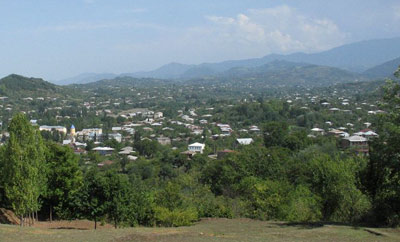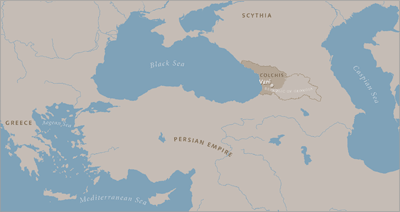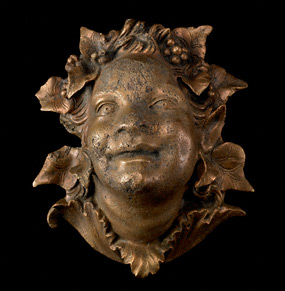 |
 |

 |
 |
View of the modern town of Vani from the ancient site. This photo and maps below courtesy of the Otar Lordkipanidze Center for Archaeological Research, the Georgian National Museum
|
The kingdom of Colchis lay in what is today the Republic of Georgia. Situated east of the Greek world, north of the Persian Empire, and southeast of the nomadic Scythians, the region was at a crossroads of cultures.
Known in myth as the destination of Jason and the Argonauts in their quest for the Golden Fleece, Colchis was renowned as a region rich in gold. Excavations at the inland site of Vani have confirmed this reputation.
The Colchian settlement of Vani—the ancient name of which remains uncertain—is situated inland from the eastern shore of the Black Sea, on a 200-meter-high hilltop flanked by deep ravines. The settlement is spread across three terraces and overlooks the fertile region between the Sulori and Rioni rivers.
|
 |
 |

 |
 |
The kingdom of Colchis lay east of Greece, north of the Persian Empire, and southeast of Scythia.
|
 |
 |
|
The earliest signs of human activity at Vani date to the 700s B.C., but it is during the fifth century (500–400 B.C.) that indications of the city's wealth become prominent. Vani appears to have served as the administrative center for the local Colchian elite, who would have overseen the agricultural economy.
The series of graves for which Vani is renowned date to about 450–250 B.C. Thereafter, rich burials appear to cease, and there seems to be a major change in the nature of activity at the site. Many of the structures built during Vani's last phase (between 250 and 50 B.C.), such as altars and cult buildings (see photo below left), seem to have had a religious or ritual function. Some scholars identify Vani as a "sanctuary-city" during this period.
One of the architectural complexes from this period discovered on Vani's central terrace contained numerous objects connected with wine—for example, 40 amphorae (storage jars) were found in one chamber. This led excavators to interpret the building as a sanctuary dedicated to wine production, and thus to Dionysos, the Greek god of wine. Further finds support this association, particularly a group of six bronze appliqués representing members of Dionysos's retinue, the thiasos, one of which is shown below.
|
 |
 |

 |
 |
Twelve-stepped altar (250–50 B.C.) from the late phase of activity at Vani. Courtesy of the Otar Lordkipanidze Center for Archaeological Research, the Georgian National Museum
|
|
 |
 |

 |
 |
Appliqué of a Satyr, Greek, from Asia Minor, 150–100 B.C., Georgian National Museum. Photo: Rob Harrell, Freer Gallery of Art and Arthur M. Sackler Gallery, Smithsonian Institution
|
 |
|
|
 |
 |

 |
 |
Torso of a Youth, Colchian, 200–100 B.C. Georgian National Museum. Photo: Rob Harrell, Freer Gallery of Art and Arthur M. Sackler Gallery, Smithsonian Institution
|
 |
 |
|
Fortification walls had been erected around the hilltop site, but they were ultimately insufficient to protect Vani from two devastating waves of attack around 50 B.C., during a tumultuous period in which Rome began to assert its power in the region. The first attack was possibly led by Pharnaces, King of the Bosporus, and the second, shortly after, by Mithridates VII of Pergamum.
A victim of the destruction was this life-size bronze torso of a youth. It looks like a Greek sculpture of the early fifth century B.C. (about 490–460), but close analysis of the manufacture and certain stylistic details (such as the short, shallow diagonal lines used to mark the pubic hair), together with evidence of bronze production at the site, suggest that it was made locally at Vani during the second century (200–100 B.C.) by sculptors working in a Greek style.
The torso serves as an excellent example of the strength of Hellenistic Greek influence at Vani during the city's final phase (250–50 B.C.). But it also testifies to the sudden demise of the site, for it was discovered lying on top of ruined walls and broken tiles—traces of the destruction that brought activity at Vani to an end.
|